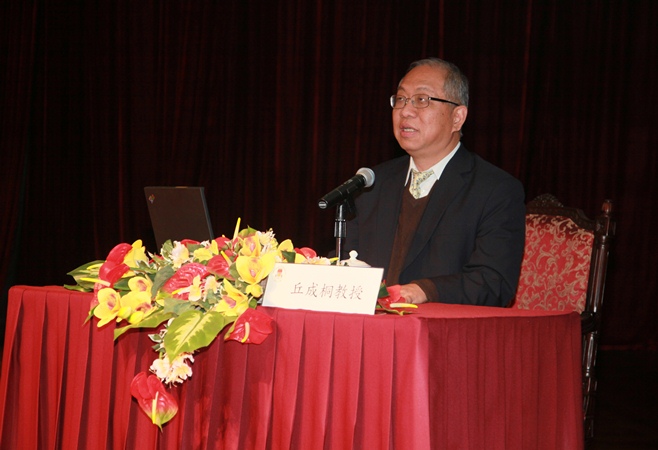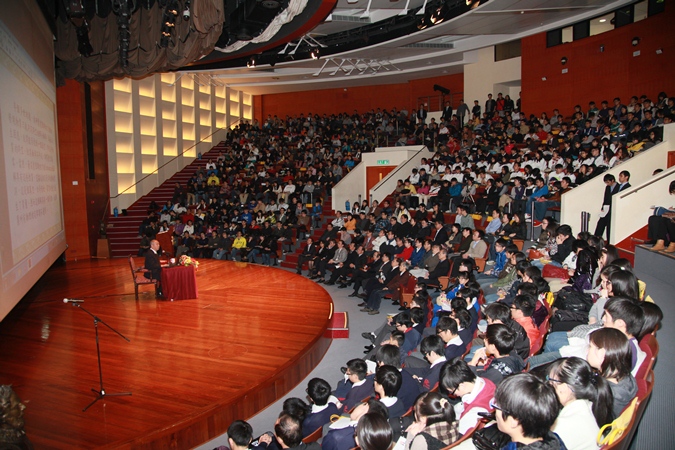|
|
| Prof. Yau tells the story of the six additional dimensions hidden away in Calabi-Yau space |
|
|
|
The talk attracts a full-house audience |
Today (3 December 2011), the University of Macau (UM) held a talk on “string theory and the geometry of the universe’s hidden dimensions”, as part of the 30th Anniversary Lecture Series. Speaker Prof. Shing-Tung Yau is a world-renowned mathematician and recipient of the Wolf Prize Laureate in Mathematics in 2010, the Fields Medal in 1982 (which is the world’s most prestigious prize in mathematics), and an honorary doctorate from UM in 2002. The talk attracted a full-house audience, including teachers and students from local secondary schools and tertiary institutions.
In his speech, UM Rector Wei Zhao said that Prof. Yau grew up in a poor family, and when he started college, many of his peers chose popular disciplines in hopes of landing a well-paid job after graduation, but the young Yau didn’t follow the crowd; he focused single-mindedly on mathematics, and eventually became a master in the field. Rector Wei Zhao said that Prof. Yau’s example shows that curiosity, diligence, a clear goal, and contentment with a simple life not revolving around the pursuit of material possessions are key to reaching one’s full potential.
The audience also learned that because of the influence of his father, who was a professor of philosophy, Prof. Yau developed a strong interest in Chinese philosophy, history and classical literature as a child, and from those books, he learned about the ways of life and scholarship. Prof. Yau is well versed in a diverse range of disciplines, which he credits to general education. Prof. Yau is also devoted to advancing teaching and research in mathematics in Chinese communities. He has spared no efforts to raise funds to establish mathematics research centres in Hong Kong, Macao, Taiwan, and mainland China.
During the talk, Prof. Yau noted that string theory assumes that spacetime has ten dimensions overall, and the three large spatial dimensions that we’re familiar with, plus time, make up the four-dimensional spacetime of Einstein’s theory. But there are also six additional dimensions hidden away in Calabi-Yau space. He introduced the audience to the history of geometry through his first-hand experiences in the field. He also discussed how mathematicians think and approach the world. In his opinion, mathematics does not have to be a wholly abstract discipline, disconnected from everyday phenomena, but is instead crucial to our understanding of the physical world. He also talked about how mathematics and physics can come together to the benefit of both fields, particularly in the case of Calabi-Yau spaces and string theory.
Prof. Yau has made fundamental contributions to differential geometry, uncovering deep intrinsic geometric structures in an astonishingly wide range of scientific disciplines like differential geometry, algebraic geometry, topology, partial differential equations, general relativity and string theory. In 1976 he proved Calabi's conjecture on a class of manifolds now named Calabi-Yau manifolds, which has now become the geometric ground on which physicists build their string theory. His new method of studying global differential equations is so powerful that it has had a seminal influence on general relativity.


